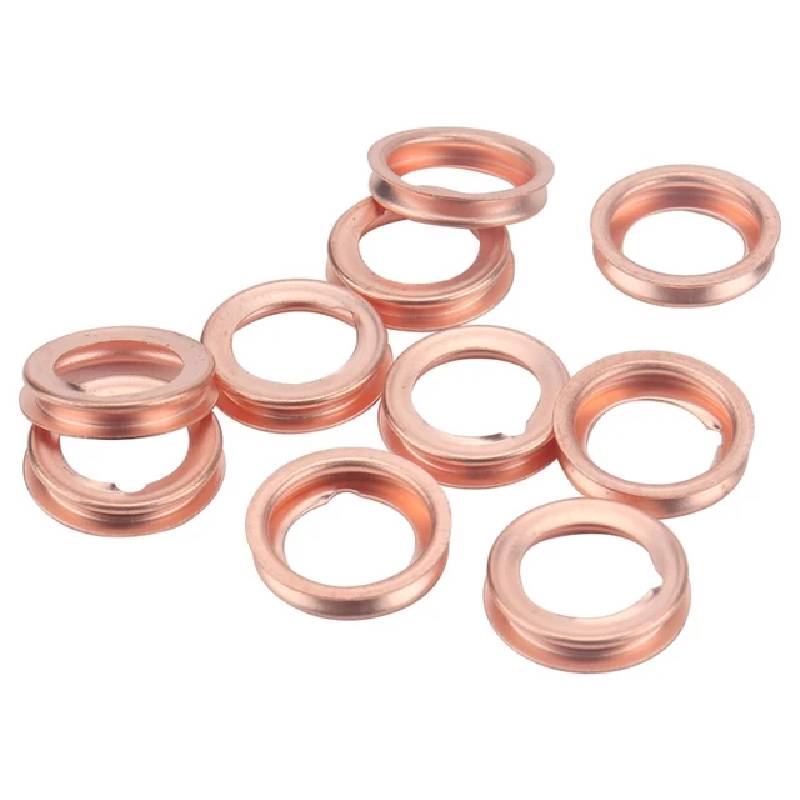Choosing the Right Oil Seal for Shock Absorbers in Automotive Applications
Understanding Shock Absorber Oil Seals Importance and Functionality
Shock absorbers are crucial components in automotive suspension systems. They help control unwanted spring motion and improve vehicle handling and comfort by dampening the energy generated from bumps, potholes, and other road irregularities. One vital element within this system is the oil seal, which plays a significant role in the effective functioning of shock absorbers.
What is a Shock Absorber Oil Seal?
A shock absorber oil seal is a mechanical component designed to retain lubricant within the shock absorber while preventing dirt and moisture from entering. The seal ensures that the hydraulic fluid used in the shock absorber remains contained, allowing the device to function optimally. Typically made from durable materials such as nitrile rubber or polyurethane, these seals are designed to withstand the challenging conditions present in automotive applications, including exposure to heat, pressure, and various environmental contaminants.
Importance of Oil Seals in Shock Absorbers
1. Lubrication Retention The primary function of the oil seal is to keep the hydraulic fluid inside the shock absorber. This fluid is essential for the damping process, allowing the shock absorber to effectively control the vehicle's movement. Without proper lubrication, the shock absorber could fail to provide the necessary resistance, leading to a bouncy and uncomfortable ride.
2. Contamination Prevention A well-functioning oil seal prevents dust, dirt, and moisture from entering the shock absorber. Contaminants can severely degrade the performance of the hydraulic fluid, leading to premature wear and tear on the internal components. Infiltration of these substances can cause the oil to become contaminated, resulting in reduced efficiency and ultimately a failure of the shock absorber.
shock absorber oil seal

3. Pressure Maintenance The oil seal helps maintain pressure within the shock absorber, which is crucial for its operation. The hydraulic fluid must remain at a certain pressure to ensure effective damping. If the seal fails, it can lead to a loss of pressure, making the shock absorber ineffective and compromising the overall suspension system.
4. Extended Service Life By preventing leaks and keeping contaminants at bay, oil seals extend the service life of shock absorbers. This longevity contributes not only to the performance of the vehicle but also to cost savings for the owner, as less frequent replacements of shock absorbers are needed.
Signs of a Failing Oil Seal
As with any automotive component, wear and tear can lead to oil seal failure. Common indicators of a failing oil seal in shock absorbers include
- Visible Leaks If you notice oil pooling beneath your vehicle or on the shock absorber itself, the oil seal may be compromised. - Bouncy Ride If your vehicle begins to bounce excessively over bumps or does not feel stable, the shock absorber could be losing hydraulic fluid due to a bad seal. - Uneven Tire Wear Improper suspension function caused by a failing shock absorber can lead to uneven tire wear, indicating that the seals and shocks may need attention.
Conclusion
Shock absorber oil seals perform critical functions in automotive suspension systems. Their ability to retain lubrication, prevent contamination, maintain pressure, and extend service life significantly impacts vehicle performance and safety. Regular checks and timely replacement of worn seals can ensure that the shock absorbers operate efficiently, providing comfort and stability for a smoother ride. Understanding the importance of these often-overlooked components can lead to better maintenance practices and a more enjoyable driving experience.
-
Your Essential Guide to Car Repair Kits: From Rust to Dings
News Jun.13,2025
-
Understanding Vital Engine Seals: Key Gaskets in Diesel and Performance Engines
News Jun.13,2025
-
The Vital Role of Bearings in Marine and Boating Applications
News Jun.13,2025
-
Sealing the System: A Complete Guide to Engine Oil Gaskets
News Jun.13,2025
-
Sealing the Foundation: A Complete Guide to Engine and Transmission Pan Gaskets
News Jun.13,2025
-
Essential Bearings and Hubs for Marine Vessels and Trailers
News Jun.13,2025
-
Your Complete Guide to Automotive Oil Drain Plugs and Valves
News Jun.12,2025
Products categories















